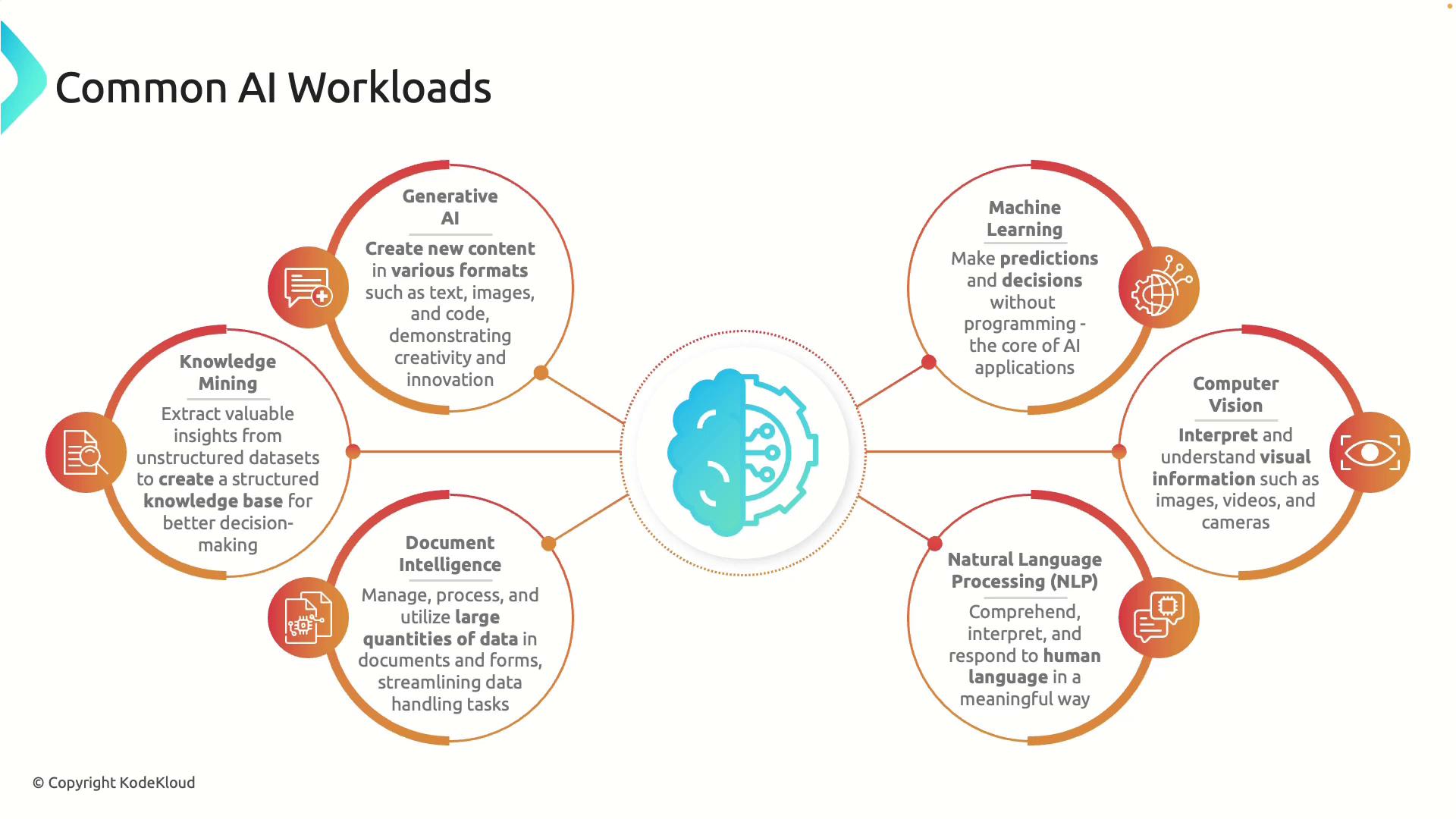AI-900: Microsoft Certified Azure AI Fundamentals
Fundamental AI Concepts
Common AI Workloads
In this article, we delve into the most common artificial intelligence (AI) workloads that drive innovation across industries. These core functions empower AI systems to solve complex real-world problems. The primary workloads include Machine Learning, Computer Vision, Natural Language Processing (NLP), Document Intelligence, Knowledge Mining, and Generative AI. Explore each workload in detail below.
Machine Learning
Machine Learning is the backbone of modern AI, enabling systems to learn from data and make predictions without explicit programming. This workload supports countless applications, such as recommending movies based on past preferences or identifying spam emails. By analyzing patterns and trends, machine learning algorithms continually improve performance and accuracy.
Computer Vision
Computer Vision allows AI systems to interpret and understand visual information from images, videos, and live camera feeds. Whether it's facial recognition for enhanced security or assisting self-driving cars in interpreting road signs and detecting pedestrians, computer vision is critical for machine navigation and environment understanding.
Natural Language Processing (NLP)
NLP focuses on the interaction between computers and human language. It empowers AI to understand, analyze, and even generate natural language, paving the way for applications like chatbots, virtual assistants (e.g., Siri and Alexa), and translation services. NLP enhances the way machines interact with users, making communications more intuitive and effective.
Document Intelligence
Document Intelligence automates the extraction and management of information from documents and forms, significantly improving productivity in sectors such as finance and legal. AI-driven document processing minimizes human error and speeds up tasks like invoice processing and contract analysis, streamlining operations in data-intensive environments.
Knowledge Mining
Knowledge Mining is the process of extracting actionable insights from unstructured data like documents, emails, and social media posts. This workload transforms vast data reservoirs into structured knowledge bases, allowing organizations to identify trends, assess customer sentiment, and make data-driven decisions efficiently.
Generative AI
Generative AI is a dynamic field focused on creating original content, including text, images, music, and more. With its creative potential, Generative AI can produce artwork in specific styles or generate human-like text responses to prompts. Notable applications include ChatGPT and GitHub Copilot in Action, making it a valuable tool for content creation, design, and software development.

Next Steps
Now that you are familiar with the core AI workloads, continue reading to discover the principles of responsible AI in our next section.
Watch Video
Watch video content